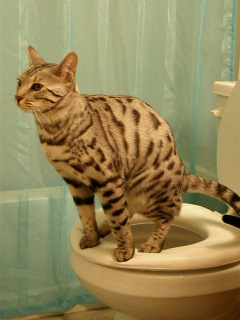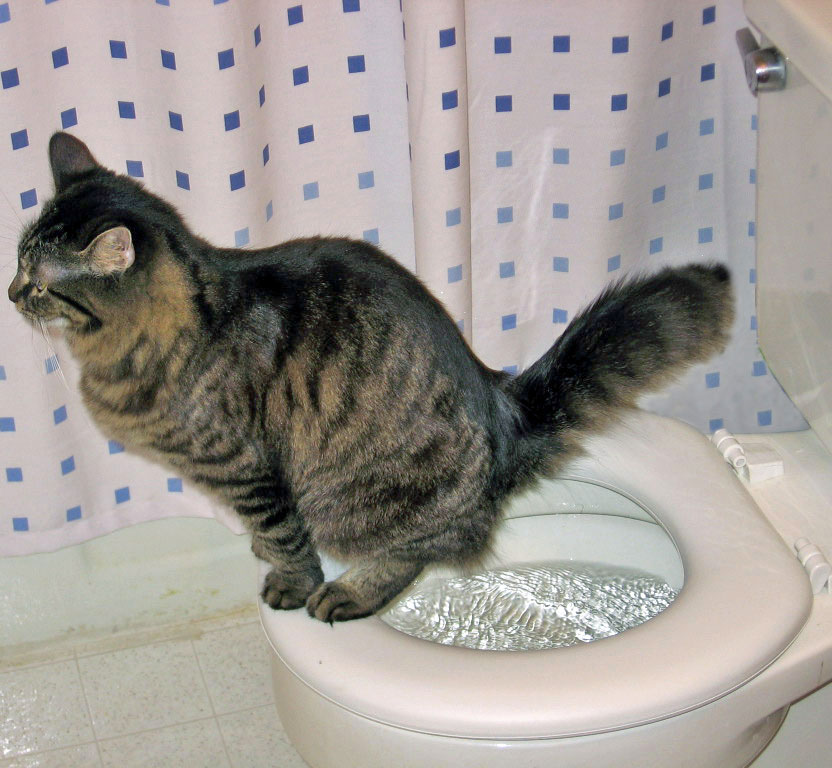What Flushing Animal Waste May be Not Advisable
What Flushing Animal Waste May be Not Advisable
Blog Article
Were you in search of answers about Can You Flush Dog and Cat Poo Down the Toilet??

When it pertains to dealing with waste, specifically animal waste, lots of people commonly resort to the convenient choice of flushing it down the toilet. Nonetheless, this relatively very easy remedy can have major consequences for the setting and public health. In this post, we'll discover why flushing pet waste down the toilet is a bad concept and provide alternative techniques for correct disposal.
Intro
Appropriate waste disposal is vital for maintaining ecological sustainability and public health. While it might appear harmless to purge animal waste down the toilet, it can cause numerous problems, both for the setting and human wellness.
Threats of flushing animal waste
Environmental impact
Purging pet waste presents damaging microorganisms and microorganisms right into waterways, which can adversely impact marine environments. These pathogens can infect water sources and harm aquatic life, interfering with fragile environments.
Public health issues
Pet waste has unsafe germs such as E. coli and Salmonella, which can pose serious health risks to human beings. Purging pet waste down the bathroom can pollute water products, causing the spread of illness and infections.
Alternatives to flushing
As opposed to purging animal waste down the commode, there are numerous alternate disposal methods that are extra environmentally friendly and sanitary.
Composting
Composting pet waste is a green method to get rid of it. By composting, organic matter is broken down into nutrient-rich soil, which can be utilized to feed gardens and plants.
Garbage dump disposal
Disposing of pet waste in a landfill is one more alternative. While not as eco-friendly as composting, it is a much safer alternative to flushing, as it prevents the contamination of water sources.
Pet dog garbage disposal systems
There are customized pet dog garbage disposal systems readily available that safely and hygienically throw away animal waste. These systems typically make use of enzymes to break down waste and eliminate odors.
Steps to proper pet garbage disposal
To ensure appropriate disposal of pet waste, comply with these actions:
Scooping and landing waste
Frequently scoop and bag animal waste utilizing biodegradable bags. This prevents waste from infecting the atmosphere.
Using assigned waste bins
Dispose of bagged pet waste in assigned waste containers, such as compost containers or landfill containers. Prevent flushing it down the bathroom whatsoever expenses.
Cleansing can and pet dog areas on a regular basis
Frequently tidy can and animal areas to avoid the build-up of waste and bacteria. Use pet-safe cleansing products to preserve health.
Advantages of correct disposal techniques
Embracing correct disposal methods for pet waste offers a number of advantages:
Lowered environmental pollution
Proper disposal methods decrease the threat of environmental pollution, protecting waterways and ecosystems from contamination
Decreased risk of water contamination.
By avoiding flushing animal waste down the commode, the risk of water contamination is substantially decreased, safeguarding public health.
Improved sanitation and hygiene
Correct disposal methods promote better cleanliness and health, creating a safer environment for both humans and pets.
Verdict
Finally, purging animal waste down the commode is dangerous to the environment and public health. By adopting alternate disposal techniques and complying with appropriate waste management methods, we can lessen the adverse effect of animal waste and add to a cleaner, much healthier earth.
Why You Should Never Flush Cat Poop Down the Toilet
A rose by any other name might smell as sweet, but not all poop is created equal. Toilets, and our sewage systems, are designed for human excrement, not animal waste. It might seem like it couldn’t hurt to toss cat feces into the loo, but it’s not a good idea to flush cat poop in the toilet.
First and foremost, assuming your cat uses a litter box, any waste is going to have litter on it. And even the smallest amount of litter can wreak havoc on plumbing.
Over time, small amounts build up, filling up your septic system. Most litter sold today is clumping; it is made from a type of clay that hardens when it gets wet. Ever tried to scrape old clumps from the bottom of a litter box? You know just how cement-hard it can get!
Now imagine just a small clump of that stuck in your pipes. A simple de-clogger like Drano isn’t going to cut it. And that means it’s going to cost you big time to fix it.
For an amusing, graphic tale of what happens when you flush too much litter down the toilet all at once, take a few minutes to read Gene Weingarten’s 2017 Washington Post column “So that’s what happens when you flush cat litter down the toilet.”
Parasitic Contamination
Believe it or not, your healthy kitty may be harboring a nasty parasite. Only cats excrete Toxoplasma in their feces. Yet it rarely causes serious health issues in the cats that are infected. Most people will be fine too if infected. Only pregnant women and people with compromised immune systems are at risk. (If you’ve ever heard how women who are expecting are excused from litter cleaning duty, Toxoplasma is why.)
But other animals may have a problem if infected with the parasite. And human water treatment systems aren’t designed to handle it. As a result, the systems don’t remove the parasite before discharging wastewater into local waterways. Fish, shellfish, and other marine life — otters in particular — are susceptible to toxoplasma. If exposed, most will end up with brain damage and many will die.
Depending on the species of fish, they may end up on someone’s fish hook and, ultimately on someone’s dinner plate. If that someone has a chronic illness, they’re at risk.
Skip the Toilet Training
We know there are folks out there who like to toilet train their cats. And we give them props, it takes a lot of work. But thanks to the toxoplasma, it’s not a good idea.
Leave the toilet to the humans, and accept your future litter cleaning duty.

Frequently tidy can and animal areas to avoid the build-up of waste and bacteria. Use pet-safe cleansing products to preserve health.
Advantages of correct disposal techniques
Embracing correct disposal methods for pet waste offers a number of advantages:
Lowered environmental pollution
Proper disposal methods decrease the threat of environmental pollution, protecting waterways and ecosystems from contamination
Decreased risk of water contamination.
By avoiding flushing animal waste down the commode, the risk of water contamination is substantially decreased, safeguarding public health.
Improved sanitation and hygiene
Correct disposal methods promote better cleanliness and health, creating a safer environment for both humans and pets.
Verdict
Finally, purging animal waste down the commode is dangerous to the environment and public health. By adopting alternate disposal techniques and complying with appropriate waste management methods, we can lessen the adverse effect of animal waste and add to a cleaner, much healthier earth.
Why You Should Never Flush Cat Poop Down the Toilet
A rose by any other name might smell as sweet, but not all poop is created equal. Toilets, and our sewage systems, are designed for human excrement, not animal waste. It might seem like it couldn’t hurt to toss cat feces into the loo, but it’s not a good idea to flush cat poop in the toilet.
First and foremost, assuming your cat uses a litter box, any waste is going to have litter on it. And even the smallest amount of litter can wreak havoc on plumbing.
Over time, small amounts build up, filling up your septic system. Most litter sold today is clumping; it is made from a type of clay that hardens when it gets wet. Ever tried to scrape old clumps from the bottom of a litter box? You know just how cement-hard it can get!
Now imagine just a small clump of that stuck in your pipes. A simple de-clogger like Drano isn’t going to cut it. And that means it’s going to cost you big time to fix it.
For an amusing, graphic tale of what happens when you flush too much litter down the toilet all at once, take a few minutes to read Gene Weingarten’s 2017 Washington Post column “So that’s what happens when you flush cat litter down the toilet.”
Parasitic Contamination
Believe it or not, your healthy kitty may be harboring a nasty parasite. Only cats excrete Toxoplasma in their feces. Yet it rarely causes serious health issues in the cats that are infected. Most people will be fine too if infected. Only pregnant women and people with compromised immune systems are at risk. (If you’ve ever heard how women who are expecting are excused from litter cleaning duty, Toxoplasma is why.)
But other animals may have a problem if infected with the parasite. And human water treatment systems aren’t designed to handle it. As a result, the systems don’t remove the parasite before discharging wastewater into local waterways. Fish, shellfish, and other marine life — otters in particular — are susceptible to toxoplasma. If exposed, most will end up with brain damage and many will die.
Depending on the species of fish, they may end up on someone’s fish hook and, ultimately on someone’s dinner plate. If that someone has a chronic illness, they’re at risk.
Skip the Toilet Training
We know there are folks out there who like to toilet train their cats. And we give them props, it takes a lot of work. But thanks to the toxoplasma, it’s not a good idea.
Leave the toilet to the humans, and accept your future litter cleaning duty.

Hopefully you enjoyed our article about Don't Flush Your Pets Poo Down The Loo, Vet Warns. Thank you for taking a few minutes to read through our blog post. Do you know about somebody who is excited about the niche? Take a moment to promote it. We love reading our article about 10 Things You Should Never Flush Down The Toilet.
Website Report this page